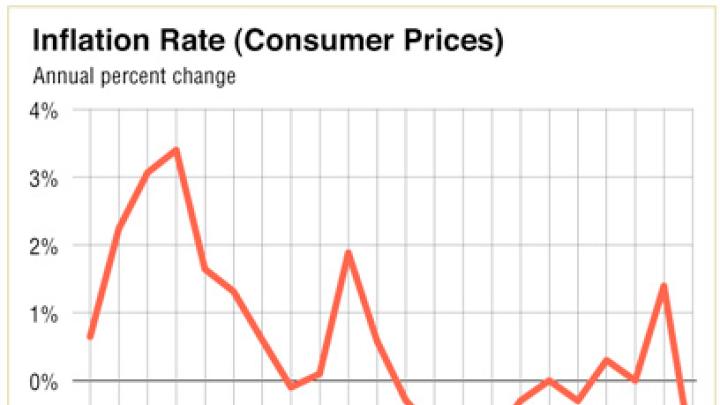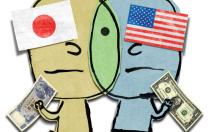Looking back to 1989, it seems incredible that when the grounds of the Imperial Palace in Tokyo were valued at more than the entire state of California, no one recognized the bubble in Japanese real estate. Instead, the economic juggernaut in the Land of the Rising Sun extended its impact on the U.S. psyche when a Japanese conglomerate bought Rockefeller Center that fall. The Nikkei index rose to its all-time high of nearly 39,000 that December.
What happened to Japan during the subsequent two “lost decades” is a cautionary tale. Since 1995, that nation’s economy has shrunk, while the Nikkei recently stood at 10,365, or 73 percent below its high of more than 20 years ago.
Ever since the American housing bubble burst in 2008, economists have drawn comparisons between Japan and the United States: in both cases, an easy monetary policy helped feed asset bubbles in stocks and real estate while the absence of inflation hid the danger. As the crises developed, both countries became caught in a liquidity trap, in which government infusions of money into the economy failed to lower interest rates, says Jeffrey A. Frankel, Harpel professor of capital formation and growth at Harvard Kennedy School. “There was also a reluctance to recapitalize failed banks,” he adds, “thus producing ‘zombies’”--banks with no intrinsic net worth that were propped up by government credit. Later, both countries adopted a strategy of “quantitative easing-”as their crises intensified--essentially printing money in order to buy financial assets from banks.
“I always explain that the U.S. is making the same mistakes Japan made,” says Takatoshi Ito, Ph.D. ’79, a professor of economics at the University of Tokyo, “but everything is faster--probably four times faster.” He describes the same tolerance for excesses and then, once financial institutions got in over their heads, an initial refusal to use taxpayer money for bailouts. But once bailouts do begin, says the former Harvard visiting professor (who has also served in the Japanese government), the government creates “lots of liquidity without addressing the moral hazard question or tackling long-term financial architecture.” Kenneth Rogoff, Cabot professor of public policy, says that during the recent U.S. bailout, the federal government was “so nice to the financial sector, investors rightly believed that no bank would be allowed to go under”--encouraging more of the same risk-taking that contributed to the crisis in the first place.
At issue is whether the United States might face a fate similar to Japan’s: a long period of economic stagnation. Japan’s unemployment is more than double what it was in the boom years, and real wages have fallen steadily, hitting a 20-year low in 2009. Repeated, drawn-out attempts at monetary and fiscal stimulus, including increasingly questionable spending on roads and bridges in a country that already had a history of massive infrastructure investment, have eventually led to a potentially crippling debt load for the nation.
“The Japanese debt-to-GDP ratio”--now nearly 200 percent-- “is already catastrophic,” says Ito. “It is just that the zero interest rate [that the government pays on its debt to bondholders] is keeping the budget pressure concealed.” If interest rates rise, paying the interest on the national debt will become a problem. If, on the other hand, the current trend of deflation continues, a larger and larger amount of debt will accumulate, still without any alarms going off. And “when you realize it,” Ito adds, perhaps when interest rates finally do rise, “it will be too late.” Either way, “very soon Japan is going to have to address the problem.”
Although the United States has a much lower ratio of debt-to-GDP, and moderate annual inflation of 2.3 percent, the debt is nevertheless “rising faster than GDP,” says Frankel: “the definition of an unsustainable and explosive path.” All else being equal, the country would appear to be at risk of entering a lost decade of its own.
All is not equal, however; there are many important differences between Japan and the United States. In stark contrast to the latter, for example, Japan is the “number one or number two creditor nation” says Ito, maintaining a trade surplus with the rest of the world. As a consequence, it has accumulated a lot of foreign assets, and therefore runs very little risk of a currency crisis despite its debt load.
On the other hand, the aging of the Japanese workforce is a significant demographic drag on the economy that explains much about the economic doldrums that have gripped the country. “The ratio between working-age people and retirees is now about 4 to 1, but it will be 2 to 1 in 20 years,” notes Ito. “This will put a strain on everything from economic growth to finding enough talented people for various professions, to social security and pensions. It is going to be very hard.”
Demographics also explain the continuing decline in the Japanese savings rate. “Those who are retired are now spending down savings to maintain their standard of living,” he says. “It is the consequence of an aging society.”
One particular problem rooted in this demographic difference is that most Japanese retirees’ savings are in the form of domestic government debt. As retirees cash in these bonds, “Who is going to redeem them?” Ito asks, and answers, “Taxpayers of the next generation. So it is the same thing as taxing the future generations.” This reliance on internal debt to fund an increasingly larger proportion of retirees among the population creates a “classic fiscal problem,” he says, and sets the stage for “generational conflict” that will only exacerbate the debt crisis.
Ever since the bursting of its asset bubble, Japan has tried to export its way out of the economic slump. Because the crisis at that time was not global in nature, the tactic seemed to make sense. But Japan was already exporting a lot, relative to the size of its economy. Further growth in exports proved difficult. In retrospect, says Stanfield professor of international peace Jeffry Frieden, “Japan probably should have reoriented its economy toward more domestic consumption, rather than putting all its resources into an export push.”
But an aging society is not one predisposed to increasing consumption. And that has contributed to deflation, a recurring problem in Japan since 1995. Because it leads to an increase in the real value of money, debts become more difficult to pay off (and consumers hold off spending, retarding economic growth). But that is just the first-order problem, Ito explains. During the inflationary period of the early 1980s in the United States, he recalls, there was a lot of talk about bracket creep: as incomes rose with inflation, people were shifted into higher tax brackets. But because their real, inflation-adjusted income had not gone up, it simply meant that more of their income was going to taxes. “What Japan has been going through in the last 10 or 15 years,” Ito says, “is a reverse bracket creep.” Employers are cutting nominal wages because of deflation, so taxpayers are falling into lower tax brackets. That, along with shrinking GDP, depresses government revenue, making it even harder to pay down the national debt. Combined with deflation’s role in increasing the real debt burden, these factors make Japan’s fiscal situation appear increasingly precarious.
Japan faces “a lot of challenges,” Rogoff adds: “a shrinking labor force” and--often forgotten in the discussion of Japan’s two-decade malaise--“competition with China.” That competition undermined the Japanese export strategy. In contrast, U.S. exports in the current global downturn have actually increased on the strength of demand from growing economies in Asia and a weaker dollar.
Thus, whereas Japan’s contracting work force has become part of a self-reinforcing downward spiral of deflation, lower consumption, and lower real wages that makes the country’s debt burden look increasing difficult to manage, the United States has room to grow. “Not only do we have land,” says Rogoff, “we have a society that is very accepting of immigrants. Culture is a huge advantage for the U.S.; it is part of our ability to be flexible.”
In addition--uniquely among the large advanced economies, explains Boas professor of international economics Richard Cooper--the United States has fertility on its side. Because the birth rate is slightly higher than replacement level, the population is growing. This will lead to a larger workforce in the future, which will in turn make it relatively easier to pay retiree benefits.
American workforce growth is expansionary, giving the economy a bias toward growth in the long-term that makes deflation less likely to take hold. That means overall debt--provided it does not continue to increase faster than economic growth--will slowly become a smaller proportion of GDP. There is no reason to think the United States will inevitably suffer Japan’s fate, provided sound fiscal policies are adopted once the recovery is assured.









